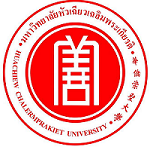Please use this identifier to cite or link to this item:
https://has.hcu.ac.th/jspui/handle/123456789/3608Full metadata record
| DC Field | Value | Language |
|---|---|---|
| dc.contributor.author | Isaree Jirajariyavech | - |
| dc.contributor.author | Sompote Kunnoot | - |
| dc.contributor.author | Krit Iemthanon | - |
| dc.contributor.author | อิสรี จิรจริยาเวช | - |
| dc.contributor.author | สมพจน์ กรรณนุช | - |
| dc.contributor.author | กฤช เอี่ยมฐานนท์ | - |
| dc.contributor.other | Huachiew Chalermprakiet University. Faculty of Public and Environmental Health | en |
| dc.contributor.other | National Institute of Development Administration. School of Social and Environmental Development | en |
| dc.contributor.other | Office of Agricultural Economics. Bureau of Agricultural Economic Research | en |
| dc.date.accessioned | 2025-02-02T03:25:58Z | - |
| dc.date.available | 2025-02-02T03:25:58Z | - |
| dc.date.issued | 2020 | - |
| dc.identifier.citation | EnvironmentAsia 13(1) (2020) 14-25 | en |
| dc.identifier.other | DOI 10.14456/ea.2020.2 | - |
| dc.identifier.uri | https://has.hcu.ac.th/jspui/handle/123456789/3608 | - |
| dc.description | สามารถเข้าถึงบทความฉบับเต็ม (Full text) ได้ที่ : https://tshe.org/ea/pdf/EA13(1)_02.pdf | en |
| dc.description.abstract | This study aims to account for the external economic impact costs to allocate an optimal CO2 emissions quota system in the Thailand ETS. The focus industries were the highly intensive energy sectors including electricity, petrochemicals, cement, iron and steel, and aviation. The economic impact is computed in terms of the combined strength of forward and backward linkages measured by Leontief’s inverse produced by the input-output (I-O) model. The calculation of the difference of Economic Impact – Emission Ratio (EIER) for industries indicated the differences in the ratio of change in economic impact as a result of one additional unit of CO2 emission reduction. The results show that economic efficiency and optimal allocation of CO2 emissions quotas can be achieved using the equi-marginal method. The results suggest that total economic costs of approximately 10.78% can be saved by implementing this optimal emissions quota allocation method. Moreover, the electricity sector should be allocated a larger quota than the other four industries. | en |
| dc.language.iso | en_US | en |
| dc.subject | Greenhouse gases | en |
| dc.subject | ก๊าซเรือนกระจก | en |
| dc.subject | Carbon Emissions – Economic aspects | en |
| dc.subject | การปล่อยก๊าซเรือนกระจก – แง่เศรษฐกิจ | en |
| dc.subject | Cost allocation | en |
| dc.subject | การจัดสรรค่าใช้จ่าย | en |
| dc.title | Accounting for External Costs in the Allocation of Carbon Emissions Quotas for Selected Industries in Thailand | en |
| dc.type | Article | en |
| Appears in Collections: | Public and Environmental Health - Articles Journals | |
Files in This Item:
| File | Description | Size | Format | |
|---|---|---|---|---|
| Accounting-for-External-Costs-in-the-Allocation-of-Carbon-Emissions.pdf | 58.73 kB | Adobe PDF | View/Open |
Items in DSpace are protected by copyright, with all rights reserved, unless otherwise indicated.
